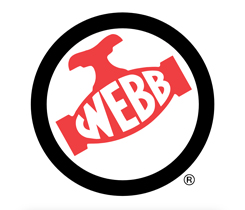Drought reaping parched harvest for propane’s grain-drying season
 Bringing to mind the poignant Dust Bowl ballads of Woody Guthrie in the 1930s, from the cornfields to the capital, comparisons are already being made regarding the potential long-term economic impact of the Great Drought of 2012.
Bringing to mind the poignant Dust Bowl ballads of Woody Guthrie in the 1930s, from the cornfields to the capital, comparisons are already being made regarding the potential long-term economic impact of the Great Drought of 2012.
Perhaps you’ve seen television news reports featuring frightened and frustrated farmers lamenting lost revenue as they hold up way-too-small ears of corn stricken with deformed kernels.
Failed fields have been laid to waste as sharp price increases for many commodities are on the way. Corn-based materials are contained in a wide array of products, ranging from cosmetics to packaging.
Ranchers have been sending their livestock to slaughter early because they can’t afford the skyrocketing cost of feed; liquidated herds will beef up the price of meat.
With what is said to be the worst drought to hit the nation in a half century, this year’s propane-fired crop-drying season, as of mid-August, appears to have withered on the vine.
And oh, how fast things can change. This year’s corn crop was predicted in March to be one of the largest on record. But, according to government officials, half of the United States faced conditions of moderate to exceptional drought. And exceptional in this context does not mean good.
More than 1,000 counties in 26 states have been declared natural disaster areas. An outbreak of wildfires is another negative development.
Searing temperatures of 100-plus degrees and lack of rain have rendered a taxpayer tab of $10 billion in federal crop insurance funds, which do not get disbursed to auxiliary industries such as propane.
“The crop drying is likely to be a bust,” says consultant Peter Fasullo of En*Vantage Inc. It bears noting, however, that the ruined croplands are not universal. There are wide swathes with adequate rain or irrigation where growers are firmly in the green and getting top dollar for their yields.
“We’re probably off 100 bushels an acre, and most of the corn is out drying in the field,” says Jason Newton, owner of Richards Elevator in Taylorsville, Ind. “The corn crop looks like crap.”
Newton’s crop-drying business is down two-thirds this year. “Last year I bought eight to nine tanker loads of LP gas. I’ve already pre-bought three tanker loads this year, but I probably won’t buy any more.”
“I don’t see much crop drying at all this year,” says Michael Faivre, general manager at Burkardt’s LP Gas in Polo, Ill., whose area has received about half of its regular 33 inches of rain. “We’ll see the combines rolling in early September, and that usually happens in October.”
Growers were booking the same amount of propane as usual, yet the outlook for actual purchases was not looking bright.
“I don’t see much wet corn coming in the fall,” Faivre says. “They’re covering their bases. It doesn’t cost them anything to book propane.”
The commercial dryers are applied to field corn used for ethanol and other industrial purposes. Sweet corn, the corn on the cob that people eat, is not dried outside the field. Silage is essentially waste, not worth trying to dry, and this year a lot of corn is meeting that fate.
Even under the best growing conditions, corn drying has been becoming a dying breed of sorts as hybrid varieties have been developed that don’t need additional moisture removal. Faivre estimates that crop drying annually burned 3.5 million gallons 20 to 25 years ago. That figure is now down to 1 million gallons in a normal year.
Tobacco curing is another use for propane-fired dryers, although it amounts to “a drop in the bucket” when compared to the income that grain drying brings in.
Actual figures on crop-drying loads are unclear, according to Mark Leitman, director of business development and marketing at the Propane Education & Research Council (PERC).
Some 1.2 billion to 1.3 billion gallons of propane are purchased each year by the nation’s overall agricultural sector, amounting to about 10 percent of the total national volume. The majority of ag propane is applied to heating buildings for poultry and eggs, livestock, dairy, hogs and greenhouses, in addition to grain drying.
Farm forklifts, older trucks and even tractors are powered by propane, and currently there are 12,000 to 15,000 LP gas irrigation pumps.
“There’s a significant amount of propane used for stationary engines,” says Leitman, adding that PERC is pushing for more widespread applications of this type, which includes large fans to ward off frost. “We have a lot of reasons to be excited about our opportunities for the engine-driven stuff.”
Propane’s value is especially apparent when compared to diesel, according to Leitman.
“When we speak to farmers, we always encourage communication with local propane dealers,” he says. “Both parties should be in some sort of agreement over supply and pricing to avoid surprises.”
PERC has also invested in a couple of projects with companies that manufacture grain-drying equipment.
“We’re working with them to develop more efficient grain dryers,” Leitman says. “Grain drying is kind of a gamble.”
Yet leaving the amber waves to dry in the field also produces unwanted consequences if the plants are ruined by storms or other calamities.
“The farmer is exposing the crop to more risk,” Leitman says.
















